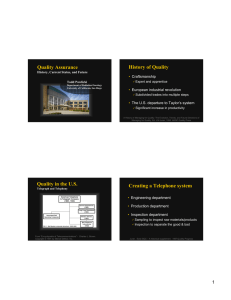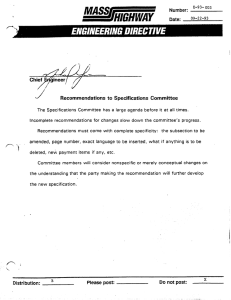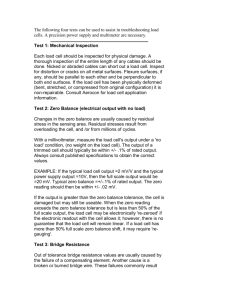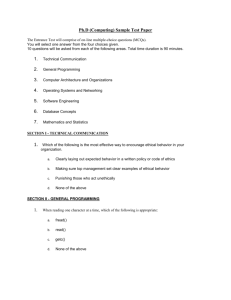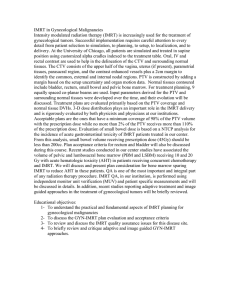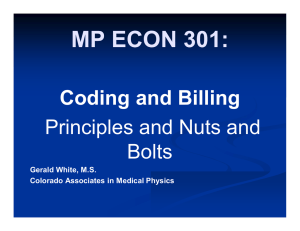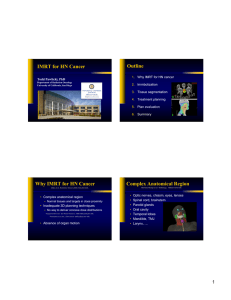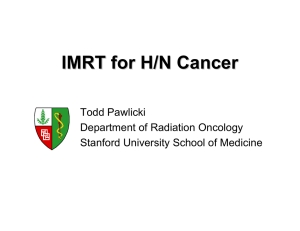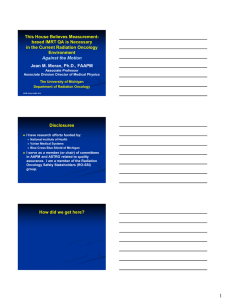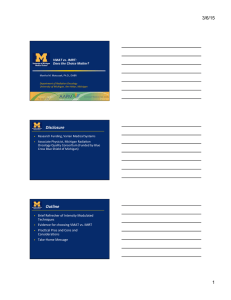Safety – Background 8/2/2012 History of Quality (Safety) Todd Pawlicki
advertisement
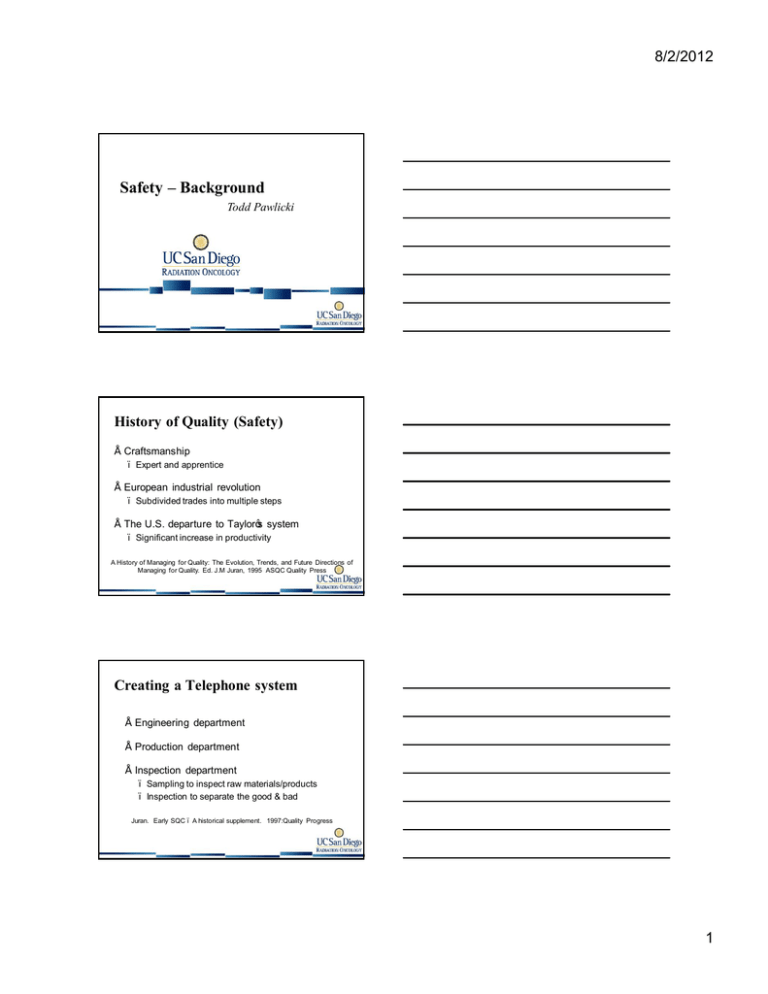
8/2/2012 Safety – Background Todd Pawlicki History of Quality (Safety) • Craftsmanship – Expert and apprentice • European industrial revolution – Subdivided trades into multiple steps • The U.S. departure to Taylor’s system – Significant increase in productivity A History of Managing for Quality: The Evolution, Trends, and Future Directions of Managing for Quality. Ed. J.M Juran, 1995 ASQC Quality Press Creating a Telephone system • Engineering department • Production department • Inspection department – Sampling to inspect raw materials/products – Inspection to separate the good & bad Juran. Early SQC – A historical supplement. 1997:Quality Progress 1 8/2/2012 Parallels with Rad Onc • Physicists entered the hospital – Craftsman • Radiation treatments become ‘routine’ – Industrialization • Quality = Checking technical aspects – Inspection Physicists primarily check the technical aspects of radiotherapy (i.e., dosimetric issues and monitoring equipment performance). Improving Quality • Bell Telephone Laboratories – Control Chart invented in 1924 – Emphasis on the process • Western Electric – Social science research (~ 1924) – Quality Management Adams & Butler. Manufacturing the Future – A history of Western Electric. 1999:Cambridge University Press. Issues in Quality (Safety) • Two dimensions of quality – High-quality decision making – High-quality performance • Decision making quality – Peer-review • Performance quality – Process analysis 2 8/2/2012 Where are we now? • Measure and inspect against specifications • Investigate incidents once they have occurred – Does charts rounds really improve quality? • “If it ain’t broke, don’t fix it.” – This can lead to latent errors in a process that can be manifested long into the future • Hard work and best efforts are the main mode of operation to improve quality Best Efforts • Working hard in a broken system will not improve quality • Management must create the optimal system and give the staff the tools to succeed W. Edwards Deming. The New Economics: For Industry, Government, Education. MIT Center for Advanced Engineering Study, Cambridge, MA, 1993. Planning complete Typical Approach to Quality Choose QA metric to test the planning/delivery process IMRT Example Within specifications (don’t worry about it) – or – Outside specifications (something is wrong, fix it, and re-measure) – or – Getting close to specifications (come back to it later) Perform the QA measurement of the IMRT plan Is the result acceptable? Out of spec Determine reason for failure In spec Document results End 3 8/2/2012 Action Limits Action Limits Accept Action Limits Target Tolerance Limits Tolerance Limits Action Limits Accept Action Limits Target Quality Improvement Action Limits Tolerance Limits Tolerance Limits Accept Target 4 8/2/2012 Quality Improvement On target with minimum variation. Investigation of IMRT QA • 7 institutions with active IMRT programs – 4 academic – 3 community • Each institution followed their in-house IMRT procedures for – Treatment planning – Quality assurance • Point dose in phantom + IMSure Two Control Charts • Clinical specifications – Set process requirements • Control chart limits – Quantify process performance Pawlicki, Yoo, Court et al. Radiother Oncol 2008 5 8/2/2012 Summary • Quality should be universally defined • A process should be judged against clinical requirements – Action levels ¹ Clinical Requirements • Control charts as the process analysis tool Question 1: In current radiation therapy, what aspects of QA are typically emphasized by the medical physicist? 24% 27% 22% 27% A. B. C. D. Medical Process Technical Primary Answer (c). Pawlicki, T and Mundt, AJ. (2011). Current and Future Quality Practice. In Jatinder R. Palta and T. Rock Mackie (Eds). Uncertainties in External Beam Radiation Therapy (pp. 483-504). Madison, WI: Medical Physics Publishing. Question 2: A quality assurance process performs independent of …. 27% 1. specifications used to judge whether the result is acceptable 24% 2. equipment used to do the work 24% 3. workload of the physicist 25% 4. experience of the physicist doing the work Answer (a). Pawlicki, Yoo, Court et al. Radiother Oncol 2008 6 8/2/2012 Question 3: What defines quality improvement? 19% 1. Always doing your absolute best 21% 2. Minimizing variation while being on target 21% 3. Always following standard operating procedures 21% 19% 4. Continuous learning from guidance documents and meetings 5. None of the above Answer (b). W. Edwards Deming. The New Economics: For Industry, Government, Education. MIT Center for Advanced Engineering Study, 1993. 7
